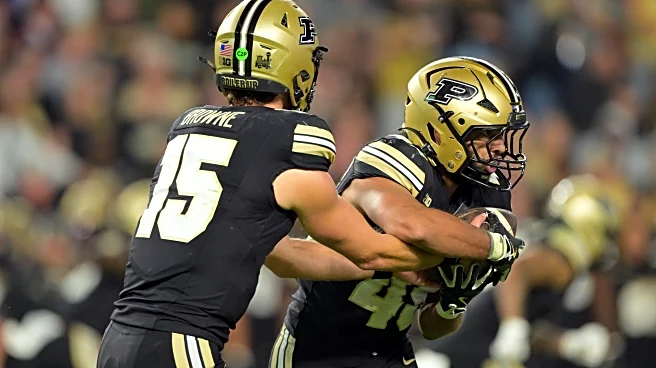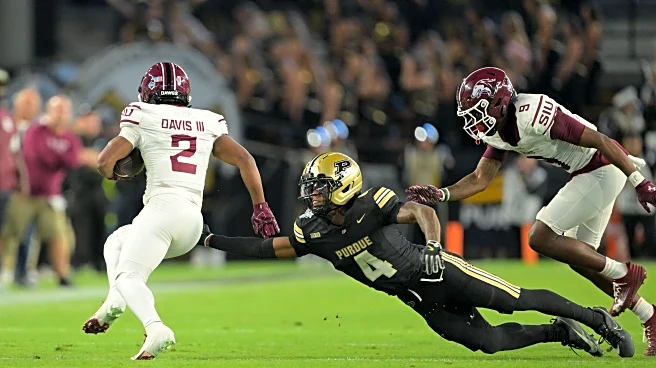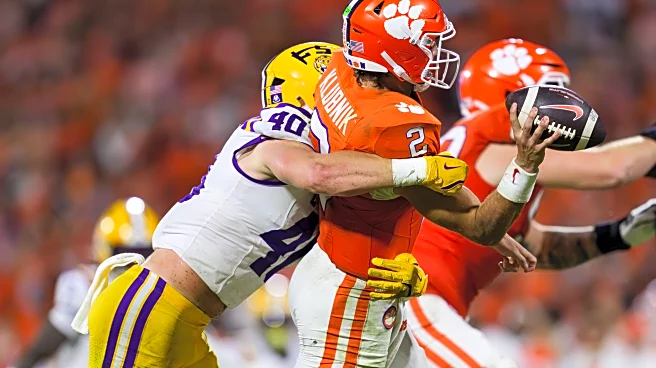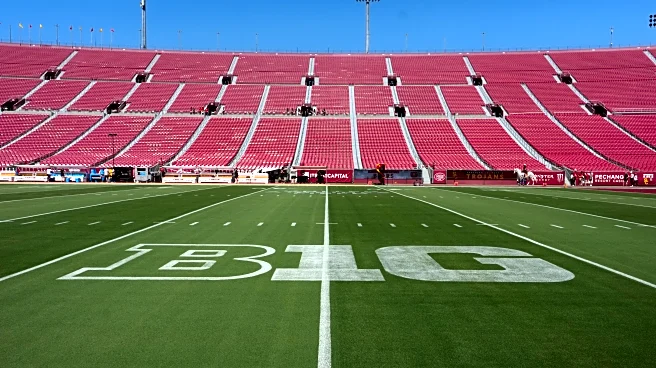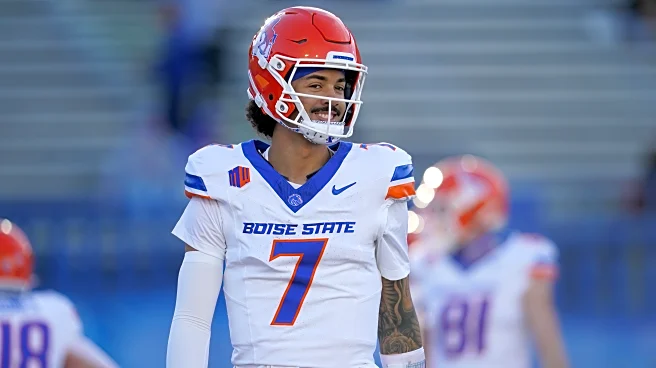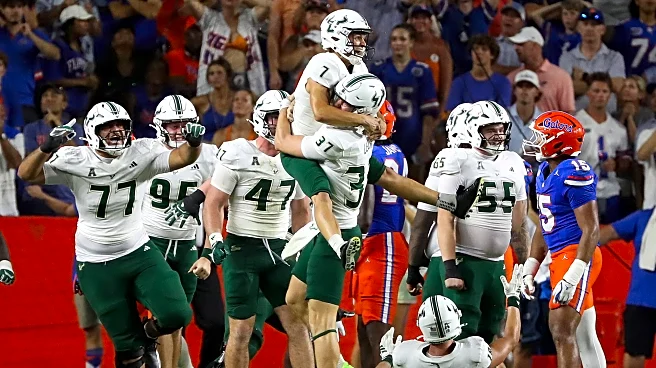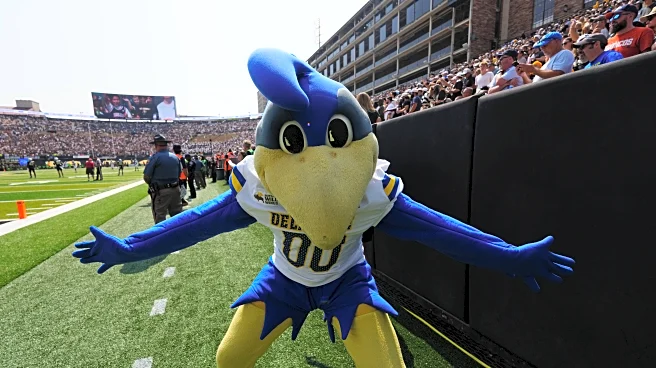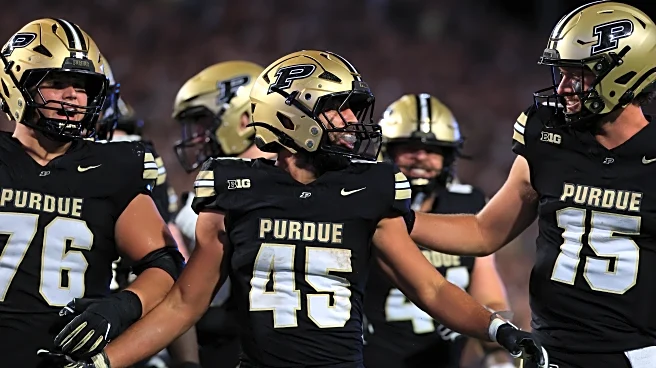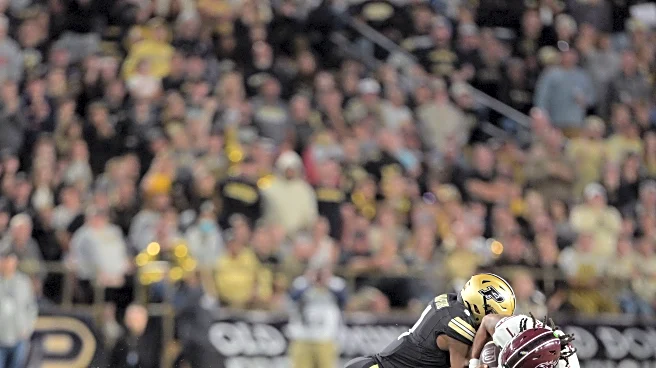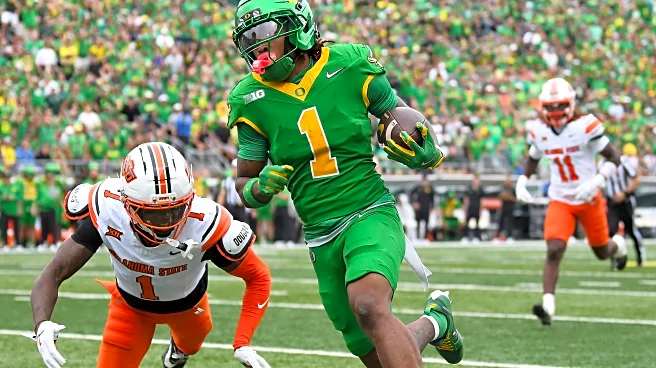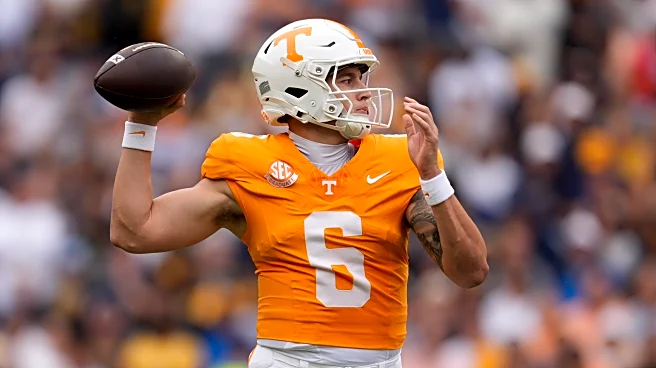The Boilermakers unleashed a relentless ground attack against the Southern Illinois Salukis last Saturday. We covered a pass from the Ball State game; it feels appropriate to cover a run from the Southern Illinois game.
I’m here to make the slides, and Harrison High head football coach and Hammer and Rails staff member Kyle Holderfield will break it all down for us.
Hopefully, we all know a little more about football by the end of the season. I know I’ve learned a few things already.
12 Personnel / Pistol Formation
Key:
Red Square:
Tight End(s)
Blue Circle: Wide Receiver
Green Triangle: Running Back

Drew
Coach, after featuring the pass in the first game against Ball State, Purdue’s offense shifted to a more run-heavy attack against Southern Illinois. A key part of the run game was Purdue running less 11 Personnel and more 12 Personnel.
Can you give us a quick rundown of 12 Personnel? What are the benefits of pulling a wide receiver off the field and replacing him with a tight end?
Coach
It all depends on the game plan. With 12, you get an extra blocker on the field, for Purdue, that’s Christian Earls, who had the highest block grade last week per PFF.
It allows Purdue to add layers to the run game with additional blockers that we didn’t see during the first game.
Drew
This play also features Devin Mockobee lined up behind Ryan Browne in what’s known as “pistol formation.”
What are the benefits of putting your running back nine yards behind the line of scrimmage? What are the drawbacks?
Coach
I am a big fan of the pistol for a downhill runner rather than a sidecar. I think it gives the ball carrier a better feel and vision of what’s in front of them.
It also gives plays a little bit more time to develop and those running lanes to open up.
Zone Blocking

Drew
A lot is going on in this frame, but what I see is a basic zone blocking scheme. I’ve done my best to highlight the different blocks.
Red Square: Two Tight Ends double-team the Strong-Side Defensive End.
Blue Square: Left Tackle climbs to the Strong Side Linebacker.
Yellow Square: Left Guard blocks down on the Strong Side Defensive Tackle. Center tags strong side defensive tackle and climbs to the next level.
Purple Square: Right Guard climbs to Middle Linebacker.
Green Square: Right Tackle walls off Weak Side Defensive Tackle.
Black Triangle: Quarterback holds Weak Side Defensive End with read option quarterback run threat.
Blue Circle: Wide Receiver pulls Weak Side Linebacker into coverage.
My basic understanding of zone blocking is that if an offensive lineman is covered up with a defender, they block down, and if a lineman isn’t covered, they climb to the second level.
The weak side defensive end is the read man and is left unblocked. If the end crashes, Browne pulls the ball and takes it off the weak side. If the end stays home, Browne gives to Mockobee. Browne’s ability to run essentially blocks a defensive end without having to touch him.
Is that about right?
Anything you would like to add?
Coach
Yeah, basically, with inside zone, most teams will block in the direction of the play. The most important item in zone run schemes is that the offensive line is stepping in unison and creating a wall, which allows the running back to bend it back and find the best running lanes.
Read Option?

Drew
I don’t think there is a quarterback option on this play. I think it’s going to be a straight handoff regardless of what the defensive end does, but because Browne is such a good runner, Southern Illinois is forced to hold their defensive end at the line of scrimmage.
Does having a quarterback run threat like Browne simplify things in the run game, or do you think he’s still taking a peek at the weak side defensive end?
Coach
I think he is just an unblocked man. They’re running away from him in particular and if he squeezes and makes that play, that’s a heck of a play by that far end.
Inside Zone vs Outside Zone

Drew
Figuring out if a team is running inside zone vs outside zone in these clips always gives me problems. The nice part about having an actual football coach on staff is I don’t have to hope I’m right.
I see Mockobee on an outside zone path on this play?
Am I right?
What makes a run an outside zone as opposed to an inside zone run?
Coach
Usually with the inside zone, you’ll see the RB shoulders more square to the line of scrimmage right away, where as with wide zone or stretch, they are running at. 10 o’clock or 2 o’clock angle with their initial steps.
You can usually tell with the offensive line, too. On wide zone, the OL should be sprinting to their assignments to stretch the play, think of the old school Peyton Manning to EDGE Stretch play.
Then the RB will either stretch the play or Bang vertical when he sees a hole.


Drew
Having a back with Mockobee has to be considered a blessing while this offensive line comes together. On this play, it looks like the strong side defensive tackle (green circle) has done a good job cutting off the outside zone by getting into the backfield. On this play, Mock is supposed to press the strong side and then cut back if that’s not available.
Mockobee sees the strong side defensive tackle and immediately puts his foot in the ground and cuts it back side. That looks like the perfect read on this play, and also a tough read because you don’t anticipate having to make your cut 5 yards behind the line of scrimmage.
I thought the weak side offensive tackle, #78 Bakyne Coley (blue box), made this play by walling off the back side and giving Mockobee a massive cutback lane.
Do I have that correct?
Anything you’d like to add?
Coach
That looks about right. You want a one-cut back when you run the zone. Going back to the NFL, think prime Terrell Davis. The line works together to form the wall, and once the running back sees a crease, he’s got to hit it hard because it’s not open long in college football.
In Conclusion
Purdue utilized an extra tight end and a zone blocking scheme to grind Southern Illinois into the Ross Ade turf. It won’t be so easy against Southern California, but if Purdue can get Mockobee going, the chances of a Purdue victory will skyrocket.
I don’t think the Boilermakers can pull this off without a functional run game, but the good news is I happen to believe they have a functional run game. We’ll know more after the game tomorrow.
